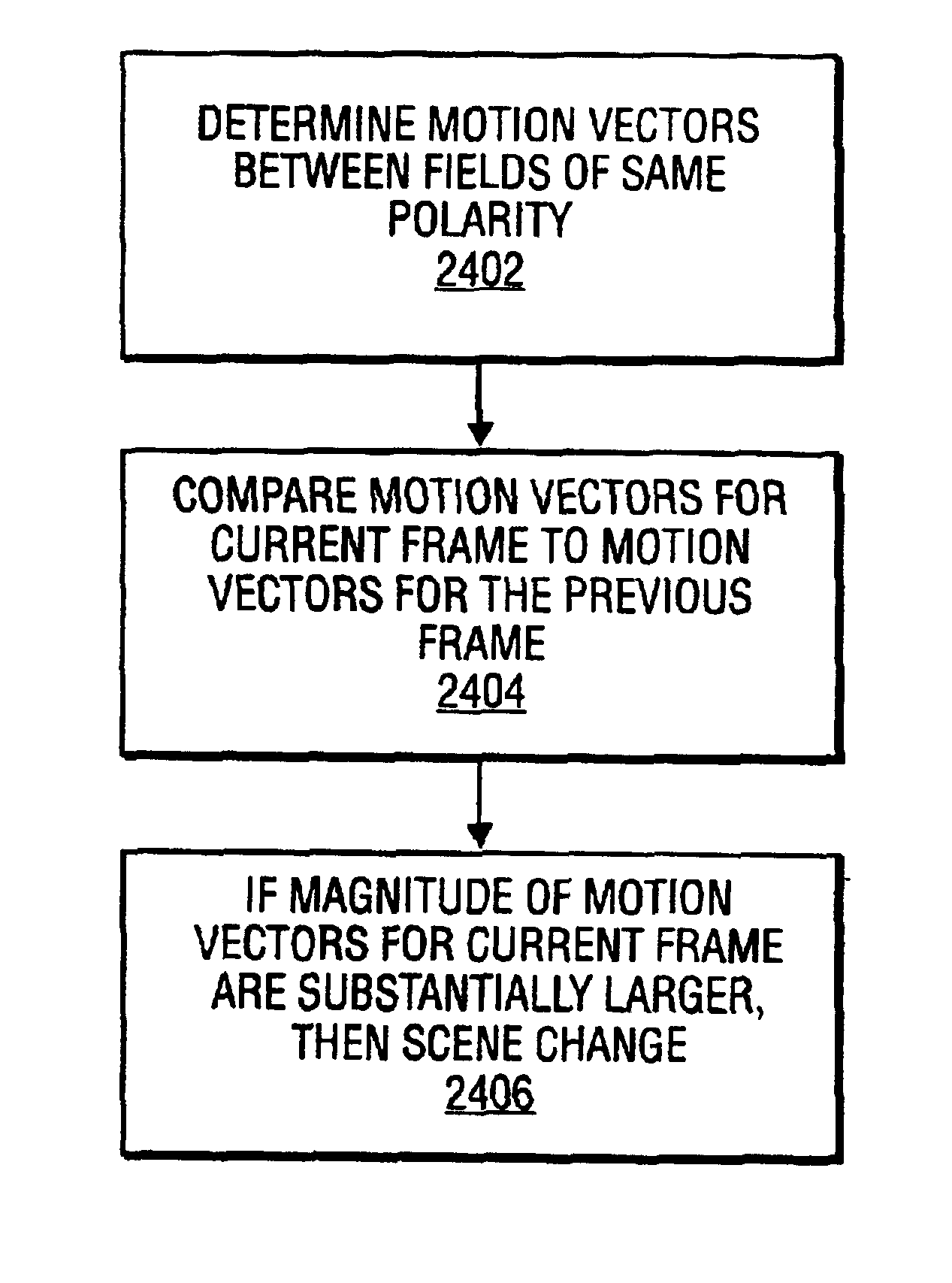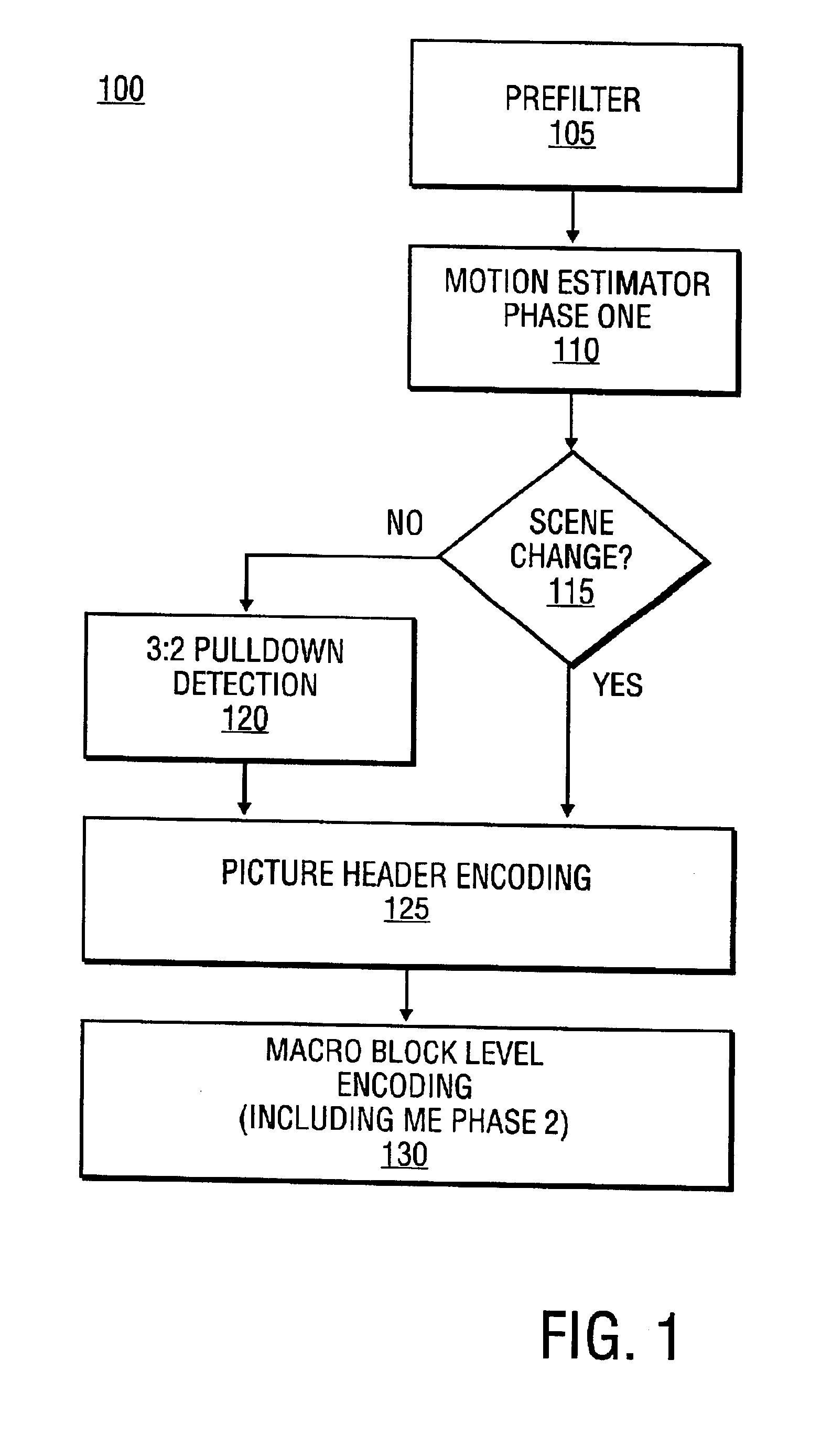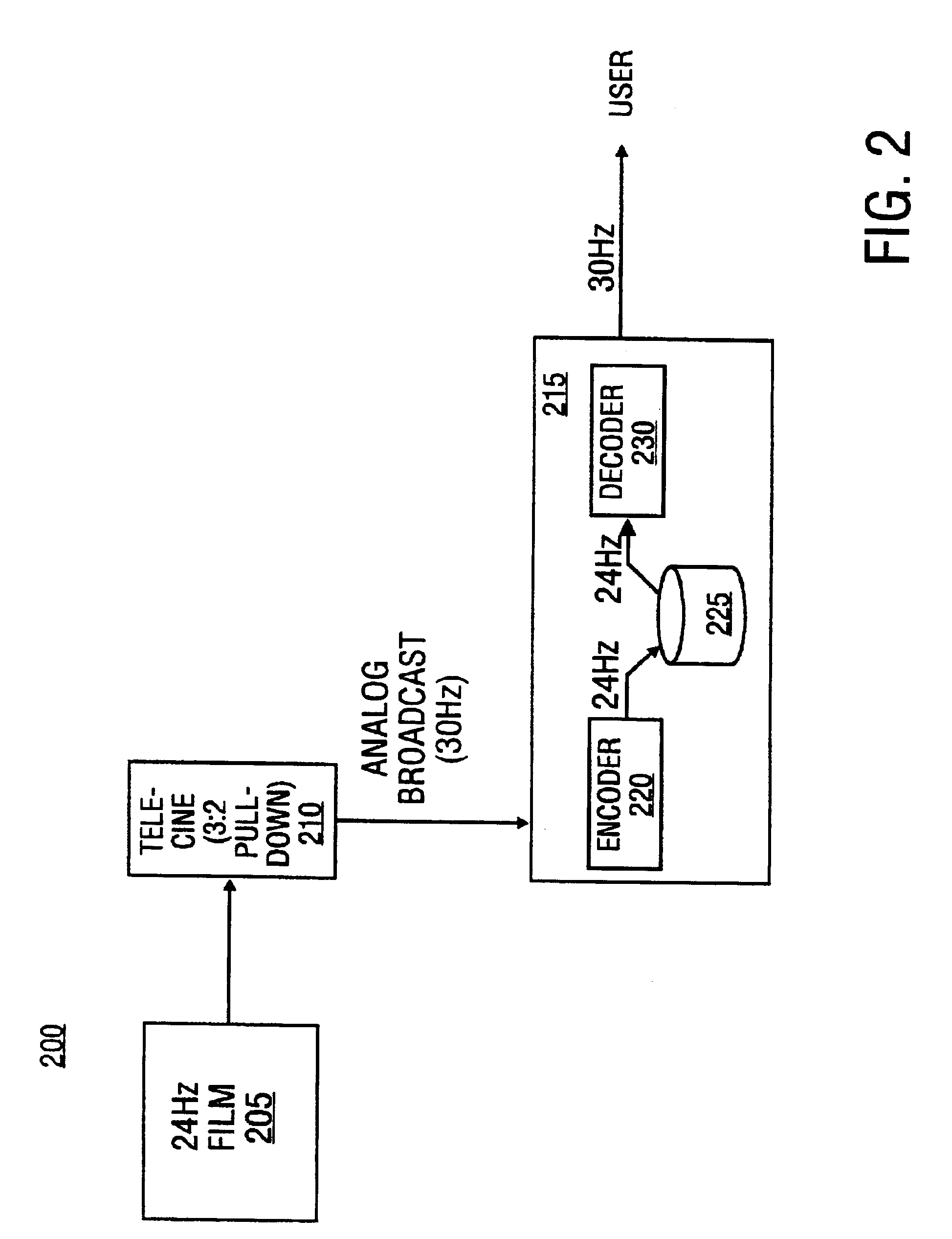Video encoder with embedded scene change and 3:2 pull-down detections
- Summary
- Abstract
- Description
- Claims
- Application Information
AI Technical Summary
Problems solved by technology
Method used
Image
Examples
Embodiment Construction
[0043]The present invention relates to devices and methods for efficiently encoding digital video. This invention may be used to increase efficiency when encoding video that has been processed using a 3:2 pull down process. Although the embodiments described below relate to encoding video that has been processed using a 3:2 pull down process, it is understood that the present invention may be used for any type of video.
[0044]FIG. 1 is a flow diagram illustrating the process of a video encoder according to one embodiment. The encoder accepts a video sequence as an input, and outputs a digitally encoded video bitstream. According to one embodiment, the video encoder encodes video according to an MPEG standard. The process illustrated in FIG. 1 is generally described; more detail will be added in figures following. It is understood that while the process of FIG. 1 illustrates one embodiment of the invention, there are numerous methods of encoding video, and one skilled in the art will ...
PUM
 Login to View More
Login to View More Abstract
Description
Claims
Application Information
 Login to View More
Login to View More - R&D
- Intellectual Property
- Life Sciences
- Materials
- Tech Scout
- Unparalleled Data Quality
- Higher Quality Content
- 60% Fewer Hallucinations
Browse by: Latest US Patents, China's latest patents, Technical Efficacy Thesaurus, Application Domain, Technology Topic, Popular Technical Reports.
© 2025 PatSnap. All rights reserved.Legal|Privacy policy|Modern Slavery Act Transparency Statement|Sitemap|About US| Contact US: help@patsnap.com



